
Measuring breast density
 insights from industryDr. Ralph HighnamCEOVolpara
insights from industryDr. Ralph HighnamCEOVolparaAn interview with Dr. Ralph Highnam, CEO of Volpara, conducted by April Cashin-Garbutt, MA (Cantab)
What are the different levels of breast density and how many women have “dense breasts”?
Women start off with breasts that are predominately full of milk-producing glandular tissue (“dense tissue”). That tissue slowly changes to fat as the woman ages with an acceleration in that change over menopause.
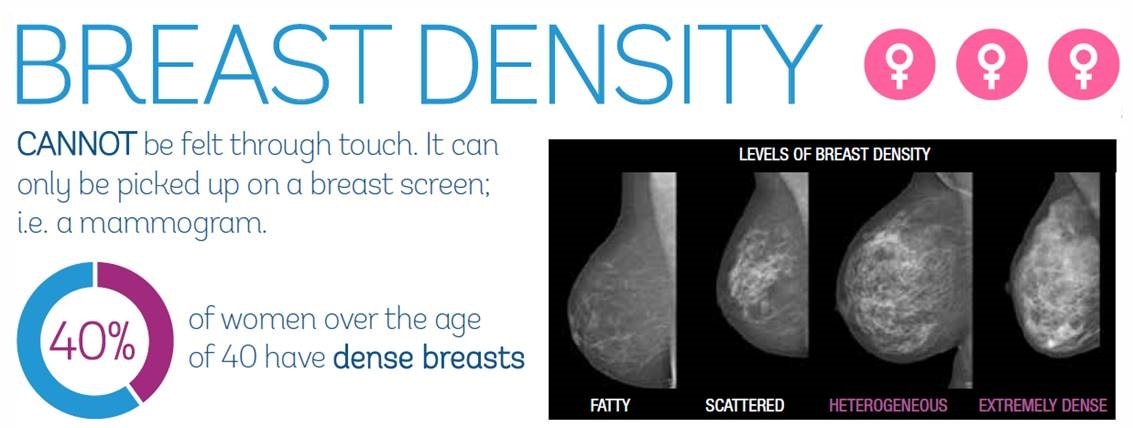
Most of the best-known ways of describing breast density start with an assessment of the volume of dense tissue from an x-ray which can be reported as a percentage of the breast, or simplified as a category where:
- “A” indicates a very fatty breast
- “B” a breast with scattered density in it
- “C” an heterogeneously dense breast
- “D” an extremely dense breast
In the West, 70–80% of women before menopause are “C” or “D”, but after menopause that drops to 40–50%.
Given how significant density is as a risk factor, you can see how important density is on a population basis.
Can breast density be felt through touch? If not, how is it determined?
You can only determine breast density by taking a breast x-ray, a mammogram, and then quantifying in some way the volume of dense tissue, or, more simplistically, the amount of white tissue in the breast.

How much evidence is there that cancer is more likely in women with extremely dense breasts?
Hundreds of papers since the 1980s have shown this link, and almost all the major breast care organisations globally now accept the relationship, albeit there remains debate about the size of the extra risk and what to do with those women at high risk.
Most of those papers used semi-automated analysis tools, but more recently fully automated tools have shown the same relationship.
Does breast density increase or decrease with age?
Decreases, with an acceleration of that decrease across menopause. This is a natural process.
Why can cancers present in women with dense breasts be missed by standard mammograms?
Cancers appear as white objects in a breast x-ray. If a white object is shown on a white or dense background it’s much harder to see than if presented on a dark or fatty background. Imagine trying to find a snowball against a snowy backdrop versus a dark road.
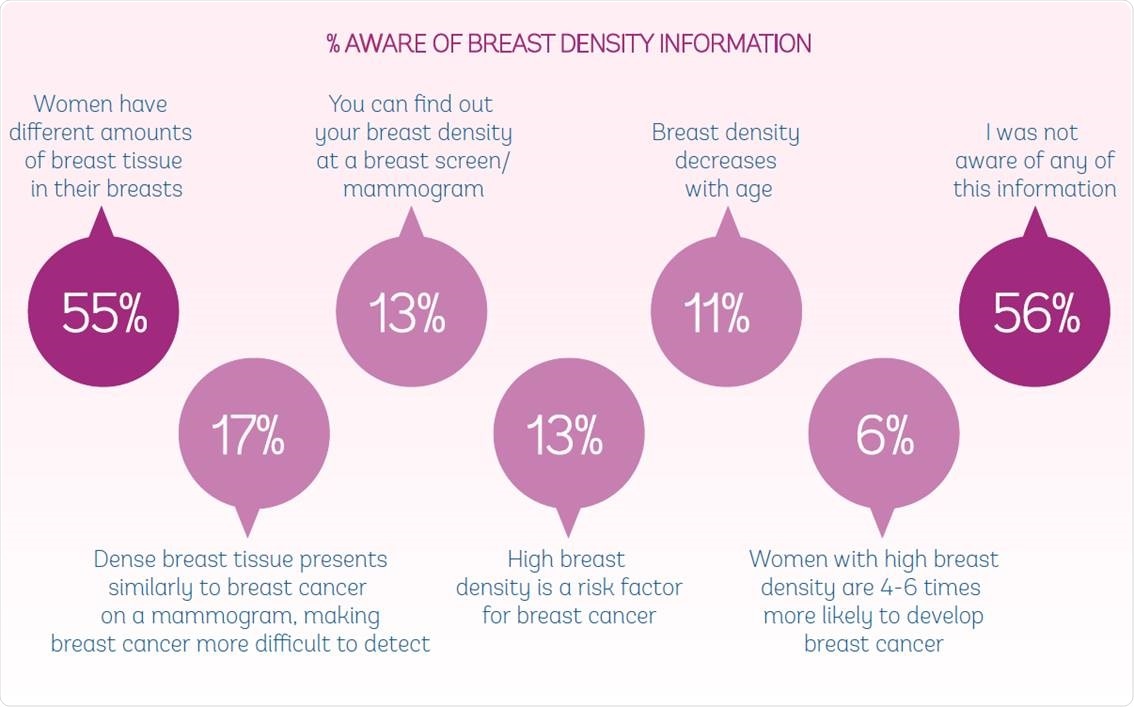
How can breast density be assessed?
Radiologists can judge density by eye, and their judgements have proven to be pretty good at predicting risk of developing breast cancer. However, there can be very significant differences in density assessment between radiologists.
A recent study in the US showed one radiologist judging just 8% of a certain population of women as being “dense”, whilst another judged 86% of that population as dense.
To help improve consistency, automated measurement software like VolparaDensity have been produced and cleared by the FDA and other regulators. These software packages automatically and objectively estimate the volume of the breast, the volume of the dense tissue, and then work out their ratio to get the real breast density.
What supplemental screening can women with dense breasts benefit from?
There’s several options now for women with dense breasts.
Tomosynthesis is a pseudo-3D form of a mammogram. The evidence is showing it helps detection of breast cancer in the “B” and “C” categories, but some recent papers have suggested little benefit in extremely fatty or extremely dense breasts.
Both whole breast ultrasound and breast MRI can detect cancers in extremely dense breasts, but the downside is more false positive biopsies and cost.
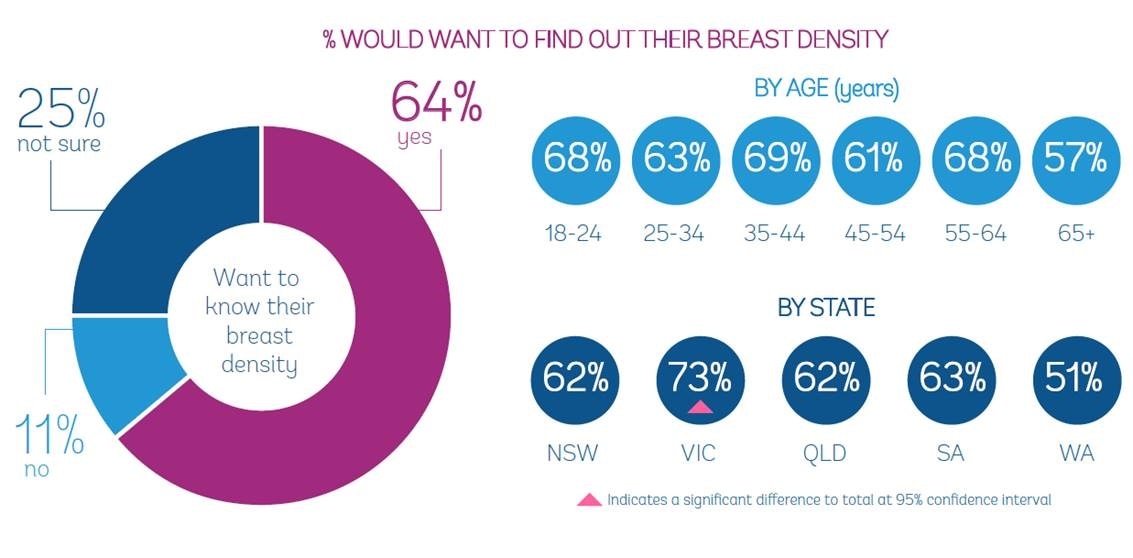
What are the main advances you’ve seen in the digital breast imaging field over the past 25 years?
Digital mammography came in around the year 2000. Although studies have shown results have not improved massively over film, that conversion has led to a range of new software applications such as computer-aided detection, automated breast density, tomosynthesis and now big-data, automated quality control systems such as VolparaEnterprise.
I’m convinced that software, rather than hardware, is going to lead to the most significant advances over the next 10 years.
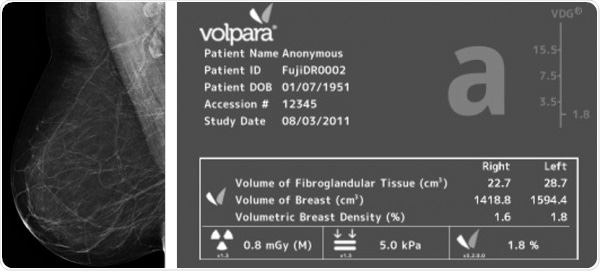
What do you think the future holds for women with dense breasts?
Much better detection and thereby reduced mortality, but also drugs to help reduce density and thereby risk.
There’s a huge amount of marketing going on currently, but it seems inevitable that women with fatty breasts will have 2D mammography, middle density women will have tomosynthesis, and then extremely dense breasted women will have 2D mammography plus an additional modality— probably some form of ultrasound but possibly MRI.
We now have the automated volumetric breast density tools to stratify women, we just need to commit globally to helping those women with extremely dense breast tissue and working out ways to minimise false-positives.
In parallel to the imaging side, the new Tyrer-Cuzick 8 breast cancer risk assessment tool includes breast density for the first time. Women at high risk of developing cancer will look to drugs such as Tamoxifen and others to reduce their density and therefore risk—can we actually start to prevent cancer?
Where can readers find more information?
One excellent website is: http://densebreast-info.org/
About Dr. Ralph Highnam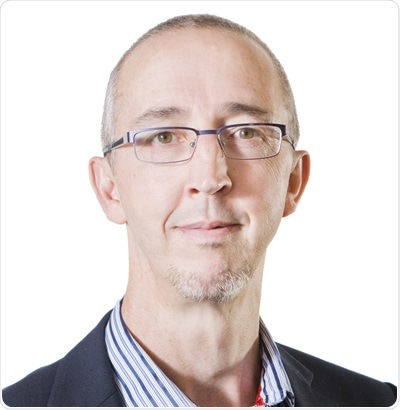
Ralph, a founding director of Volpara Health Technologies, has been at the forefront of the digital breast imaging field for over 25 years. Initially a research scientist at the University of Oxford, Ralph’s innovative work in quantitative breast imaging technology led him to form first OXIVA Limited and then Mirada Solutions with Professor Sir John Michael Brady. Under Ralph’s leadership Mirada became the number-one provider of image registration and fusion tools before being acquired by CTI Molecular Imaging Inc. and later Siemens Medical Solutions USA, Inc.
Before founding Volpara in 2009, Ralph consulted for many of the world’s top medical imaging companies, including R2, Siemens, Hologic and Dexela, as well as many leading breast screening programs. During this time, he continued his academic research as part of an international circle of collaborators.
Ralph is the author of numerous articles and, with Brady, the seminal book Mammographic Image Analysis. As CEO of Volpara, Ralph is dedicated to providing the most accurate measurements possible of breast composition (“breast density”) in order to improve the health outcomes of women around the world. Based in Wellington, New Zealand, in 2015 he was named a Wellingtonian of the Year finalist.






















.png)











No hay comentarios:
Publicar un comentario